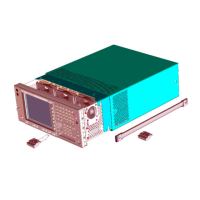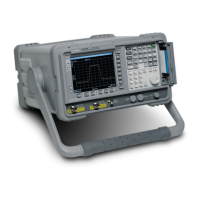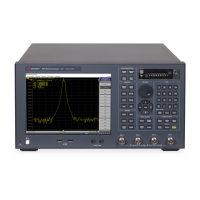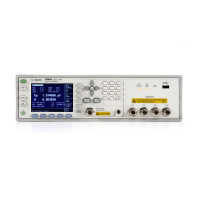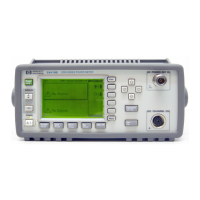Chapter 1 21
Introduction to Programming X-Series Applications
SCPI Measurement Commands
a sub-opcode <n> (default=1) to specify the trace. With trace queries, it is best if the
analyzer is not sweeping during the query. Therefore, it is generally advisable to be in
Single Sweep, or Update=Off.
This command is used to compress or decimate a long trace to extract and return only the
desired data. A typical example would be to acquire N frames of GSM data and return the
mean power of the first burst in each frame. The command can also be used to identify the
best curve fit for the data.
• BLOCk or block data - returns all the data points from the region of the trace data that
you specify. For example, it could be used to return the data points of an input signal
over several timeslots, excluding the portions of the trace data that you do not want.
(This is x,y pairs for trace data and I,Q pairs for complex data.)
• CFIT or curve fit - applies curve fitting routines to the data. <soffset> and <length> are
required to define the data that you want. <roffset> is an optional parameter for the
desired order of the curve equation. The query will return the following values: the
x-offset (in seconds) and the curve coefficients ((order + 1) values).
MIN, MAX, MEAN, DME, RMS, RMSC, SAMP, SDEV and PPH return one data value for
each specified region (or <length>) of trace data, for as many regions as possible until you
run out of trace data (using <roffset> to specify regions). Or they return the number of
regions you specify (using <rlimit>) ignoring any data beyond that.
• MINimum - returns the minimum data point (x,y pair) for the specified region(s) of
Remote Command :CALCulate:DATA<n>:COMPress?
BLOCk|CFIT|MAXimum|MINimum|MEAN|DMEan|RMS|RMSCubed|SAMP
le|SDEViation|PPHase
[,<soffset>[,<length>[,<roffset>[,<rlimit>]]]]
Example To query the mean power of a set of GSM bursts:
Supply a signal that is a set of GSM bursts.
Select the IQ Waveform measurement (in IQ Analyzer Mode).
Set the sweep time to acquire at least one burst.
Set the triggers such that acquisition happens at a known position
relative to a burst.
Then query the mean burst levels using, CALC:DATA2:COMP?
MEAN,24e–6,526e–6 (These parameter values correspond to GSM
signals, where 526e–6 is the length of the burst in the slot and you
just want 1 burst.)
Remote Command Notes The command supports 5 parameters. Note that the last 4
(<soffset>,<length>,<roffset>,<rlimit>) are optional. But these
optional parameters must be entered in the specified order. For
example, if you want to specify <length>, then you must also specify
<soffset>. See details below for a definition of each of these
parameters.
This command uses the data in the format specified by
FORMat:DATA, returning either binary or ASCII data.

